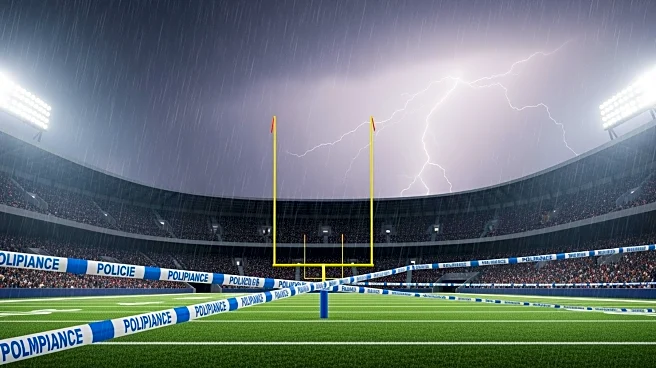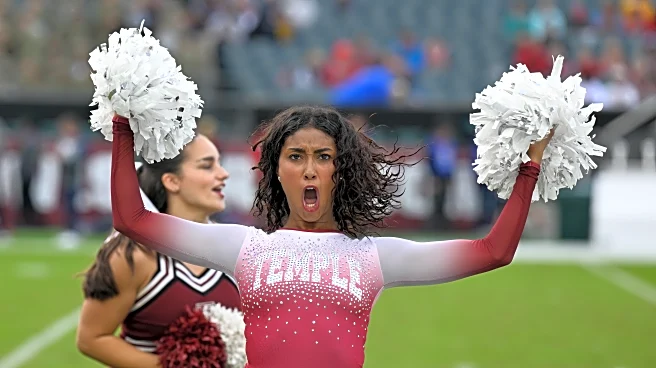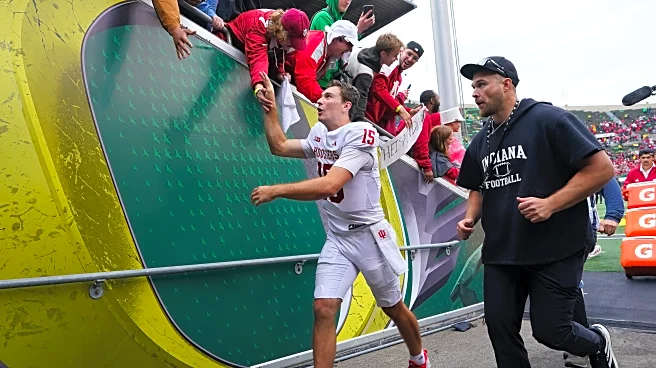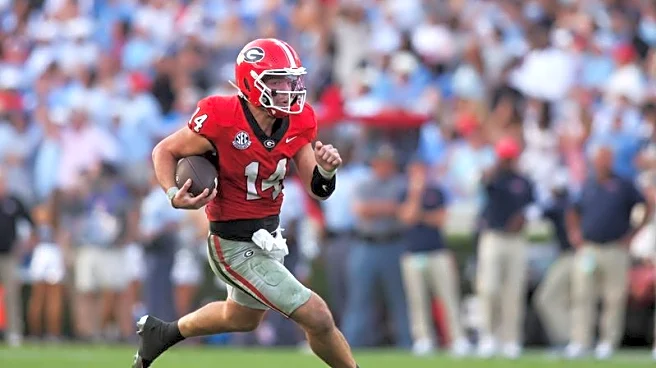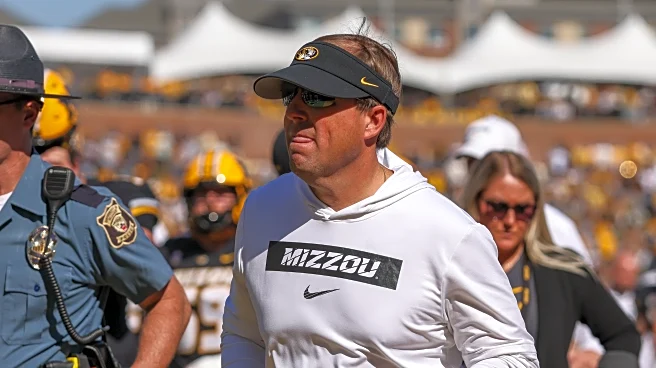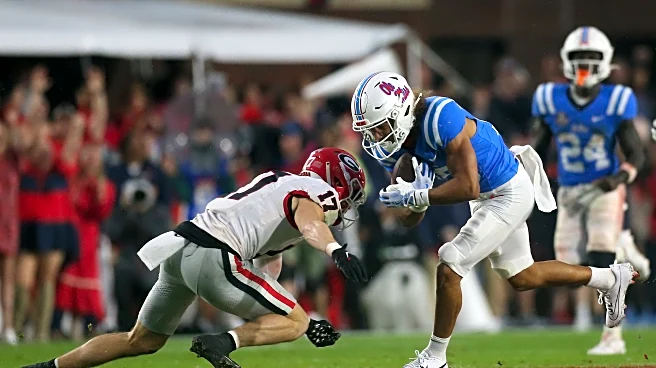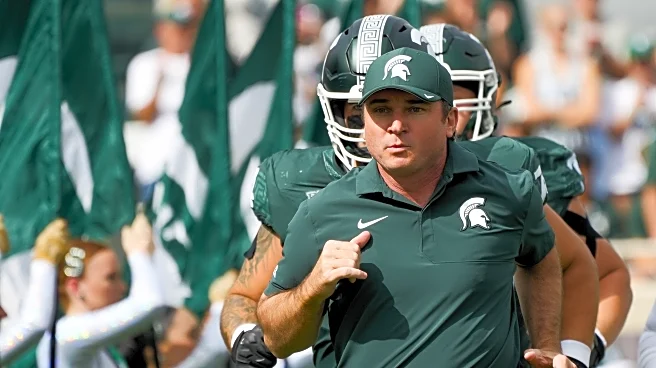What's Happening?
The Indiana-Michigan State football game experienced a 30-minute delay due to lightning strikes in the Bloomington area. The game, held at Indiana Memorial Stadium, was paused during halftime as per NCAA
protocols, which mandate a halt if lightning is detected within six miles of the venue. The delay is part of a broader weather impact affecting several Power 4 games across the country, including Texas A&M-Arkansas and Baylor-TCU. Indiana, leading Michigan State 21-10 at halftime, resumed play after the delay, although rain and thunderstorms are forecasted to continue until 9 p.m. ET. The game is being streamed exclusively on Peacock, NBC's subscription service, as part of the Big Ten conference's TV deal.
Why It's Important?
Weather delays in major sporting events can significantly impact team strategies and player performance, especially in football where weather conditions can alter gameplay dynamics. For Indiana, maintaining their lead against Michigan State is crucial to remain undefeated this season. The delay also highlights the importance of safety protocols in sports, ensuring the well-being of players and spectators. The exclusive streaming on Peacock reflects the growing trend of sports broadcasting moving towards digital platforms, affecting how fans access live games.
What's Next?
As the game resumes, both teams will need to adapt to the wet conditions, potentially favoring run-heavy strategies. The continuation of rain and thunderstorms could lead to further delays, impacting the game's schedule and viewer experience. Stakeholders, including team coaches and broadcasters, will be monitoring the weather closely to make real-time decisions. The outcome of the game could influence Indiana's standing in the Big Ten conference, affecting their postseason prospects.
Beyond the Headlines
The shift to streaming services like Peacock for live sports coverage represents a significant change in media consumption patterns, potentially affecting traditional broadcast networks. This move could lead to increased subscription revenues for streaming platforms while challenging conventional TV ratings. Additionally, the emphasis on safety protocols during weather events underscores the evolving nature of sports management, prioritizing player and spectator safety in response to environmental challenges.
